5 Steps to Better Customer Connections

There's no getting around it. Building a brand's successful media strategy is difficult but it's a necessity that can't be ignored. Mobile apps and social media are where you find your customers. Research reveals that an average of almost 3-1/2 hours per day are spent on mobile devices, with 20 minutes or more time devoted to a social media app by 75 percent of adults.
All the while, big social continues to grow and mature into a bloated and fragmented state. So with all of the rapid evolution and associated costs coupled with the lack of organic reach and control over the business it begs the question: Are companies like Facebook delivering the type of experience that your business needs and your customers want? Or are they just getting you to leverage their users and conform to a monetization strategy built to legitimize their platform?
To stay competitive on sites like Facebook, YouTube and Twitter, you must understand how to improve your company's odds of success with these 800-pound gorillas crowding the room.
Aspiring for "Organic" Reach is No Longer a Reality
Platforms like Facebook are trying to be "all things to all people" and extract more revenue per visit. This means they are constantly adapting algorithms and approaches that attempt to optimize their revenue and serve everyone, yet end up alienating users and brands with increasing regularity.
As of 2016, an average of 2,000 posts per day were eligible to be seen in the average user's feed on Facebook. This data point makes it clear it's becoming increasingly difficult to have a post be seen organically in a news feed. Since most feed content is paid content, the only way for a brand or business to gain visibility in the feed is through paid ads or boosted posts.
Pay to Build, Pay to Access
Typically, you have to spend a great deal in ads and promoted posts to build an audience on a platform like Facebook, and pay more to access and interact with that audience once you've established it.
For example, the average price per impression for 1,000 users on Facebook is about $7.34. A single post to reach an audience of 700,000 users would cost $5,138. Note that this cost represents impressions. If you want to convert those impressions to users, expect to pay $1-6 per user. This says nothing of the cost to obtain those 700,000 users to start with.
The more saturated the big social media platforms become, the more you'll have to pay to get noticed. Monolithic social is becoming an evil empire on the brink of a major disruption. But until that happens, what can you do?
Regardless of the platform, there are a few simple things that you can do to improve your odds of success and cut through the noise. We have had success following these five tips:
*Create Exceptional Ad Content.
Strong visuals and clear simple calls to action are key in developing extremely good creative. Static ads are good, video is better. Video is often viewed as expensive and complicated to produce but it doesn't have to be. All of our videos, live action as well as animated motion graphics, are produced internally by a team of one, and typically result in a customer acquisition cost (CAC) of under $2.00/user. Thanks to the gig economy you don't need to have in-house talent. We have found amazing talent at very reasonable rates with excellent turnaround by using fivver.com extensively to supplement our creative staff.
*Understanding your audience.
An important strategy to implement is the more specific you get with your targeting, the more effective the campaign. You will have made an important first step if you understand what helps connect an audience to your message such as demographics including age, gender, interests, etc. At our company, we build communities around extremely focused collector or fan niches, so our audiences are very easy to target on a platform like Facebook. For example, it was easy for us to add more than 2,000 users to our Batman club in a week at a very low CAC via Facebook ad targeting.
Also, keep it fun! Knowing your audience also means having a voice that pervades your site, your app and every piece of creative that utilizes language. Conversion will improve significantly if you can make your audience laugh and feel good, or more generally talk in a way that tells them that you get them.
*Before you start the campaign, test your ads!
You can save thousands of dollars and improve your hit rate by several orders of magnitude by simply testing creative with your demographic. We use a site called usertesting.com to test creative before we run a campaign. Often the result is that we find that even the smallest copy or images changes can result in dramatic difference in campaign performance.
*Implement a landing page.
A great way to explain your promotion at the next level of detail before the user commits to your product is to use landing pages. Services such as instapage.com make landing pages extremely easy to implement and provide great metrics too. Since we've started using landing pages, conversions have improved and landing pages have lowered our CAC consistently to under $2 per user.
* Monitor, tweak, repeat.
As discussed earlier, testing your ads before you deploy them will greatly improve your odds, however you'll never know how an ad will perform until it's deployed. Make sure someone understands how to work with Facebook Business manager and is diligent in the process of reviewing stats daily. Typically an ad needs a few days to a week to get some traction but be ready to make adjustments if it isn't hitting targets. Big improvements in the performance of an ad can be the result of making small changes. If the adjustments don't work, know when to quit. If it's not working, cut it loose and move on to the next concept. Never justify the amount of time or expense that goes into it.
There is no magic bullet or formula for creating a successful social media strategy but these are the basic building blocks of a successful social media strategy that are proven, common sense techniques to greatly improving your odds.
While there are other strategies that you can couple with these basic techniques, what's presented here represents the elements to a strategy that has resulted in extremely high conversions at a very low acquisition cost for us. Adhering to these basic concepts can help you to succeed, regardless of the changes in the ever-evolving and often less than optimal landscape of social media marketing.
About the Author
 Tom Bennett is the CEO of Gemr, a social app and marketplace for fans, brands and collectors. In addition to building Lexington Software Associates (acquired in 1999 by Interwoven), Tom was a Series A investor along with Greylock Partners and General Atlantic Partners in one of the first open source, Web application platforms, The ArsDigita Community System (acquired by RedHat). Tom is also a co-founder of Eldarion, a Django/Python application development consultancy that created an industry leading Devops as a service platform called Eldarion Cloud.
Tom Bennett is the CEO of Gemr, a social app and marketplace for fans, brands and collectors. In addition to building Lexington Software Associates (acquired in 1999 by Interwoven), Tom was a Series A investor along with Greylock Partners and General Atlantic Partners in one of the first open source, Web application platforms, The ArsDigita Community System (acquired by RedHat). Tom is also a co-founder of Eldarion, a Django/Python application development consultancy that created an industry leading Devops as a service platform called Eldarion Cloud.
Subscribe to Our Newsletter!
Latest in Social Media










